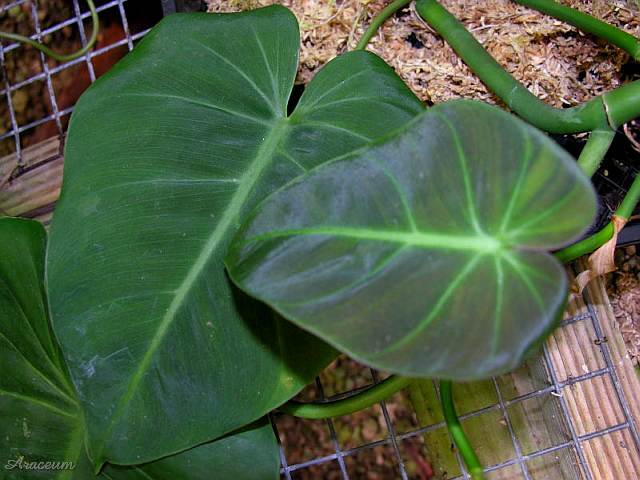Philodendron hederaceum var. miduhoi
Matuda 1950
This photo was submitted by Steve Lucas to the ID Center, he wrote that:
It is velvety similar to a P. gloriosum and somewhat resembles P. andreanum.
It creates long vines and is a climber. This leaf is close to 1 foot (30 cm).
Then there was a very long discussion on Aroid-L
if it is a species, variety or form of Ph. hederaceum. You can read it all below.
